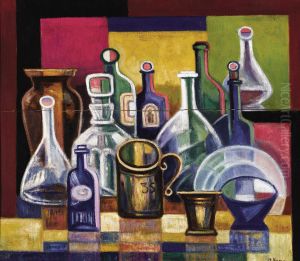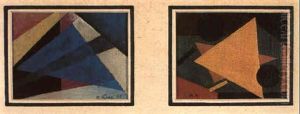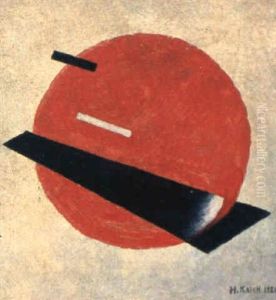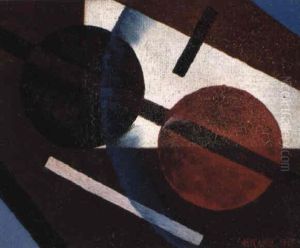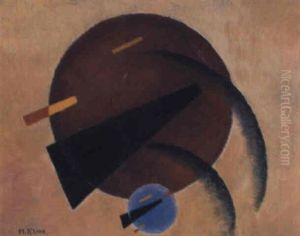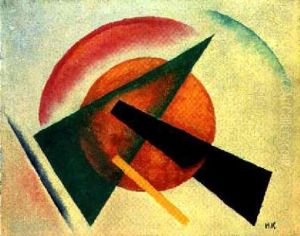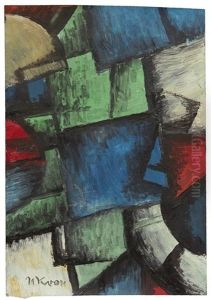Ivan Vasilievich Klyun Paintings
Ivan Vasilievich Klyun, born in 1873 in Bolshie Gorki, Moscow Governorate, Russian Empire, was a pioneering Russian avant-garde artist, sculptor, and art theorist. Klyun's artistic journey began in the late 19th century, but his most influential period was in the early 20th century, amidst the whirlwind of Russian avant-garde movements. Initially influenced by Impressionism and Symbolism, his style evolved significantly over the years, reflecting the dynamic changes in art movements and political climates of his time.
Klyun's involvement with the revolutionary avant-garde began in earnest after he met Kazimir Malevich in 1910. This meeting proved pivotal, leading Klyun to explore and eventually embrace Suprematism, a movement founded by Malevich that focused on basic geometric forms and the use of a limited color palette. Klyun became an active participant in the Suprematist movement, contributing to its development and participating in key exhibitions, including the 0.10 Exhibition in 1915, which was a landmark event in Russian avant-garde art.
In addition to Suprematism, Klyun had a keen interest in Constructivism. After the Russian Revolution of 1917, he was involved in educational and artistic projects aimed at building a new society. He worked in various capacities, from teaching at the Vkhutemas (the Higher Art and Technical Studios) to creating industrial designs and participating in the creation of propaganda art. His work during this period reflects an exploration of how art can serve society and the development of a new visual language suitable for the revolutionary spirit of the time.
Despite his significant contributions to Russian avant-garde art, Klyun's work was somewhat overshadowed by his contemporaries, and he did not gain the same level of recognition as some of his peers during his lifetime. However, his art and theoretical writings have been reassessed in recent decades, highlighting his role in the development of modern art movements and his influence on the trajectory of Russian and Soviet art.
Klyun's artistic output was diverse, ranging from painting and sculpture to graphic design and theoretical writings. His work is characterized by a continuous exploration of form and space, and a dedication to the avant-garde's ideals of innovation and experimentation. Ivan Klyun died in 1943, leaving behind a legacy that has become increasingly appreciated for its contribution to the avant-garde movement and its influence on the evolution of modern art.



